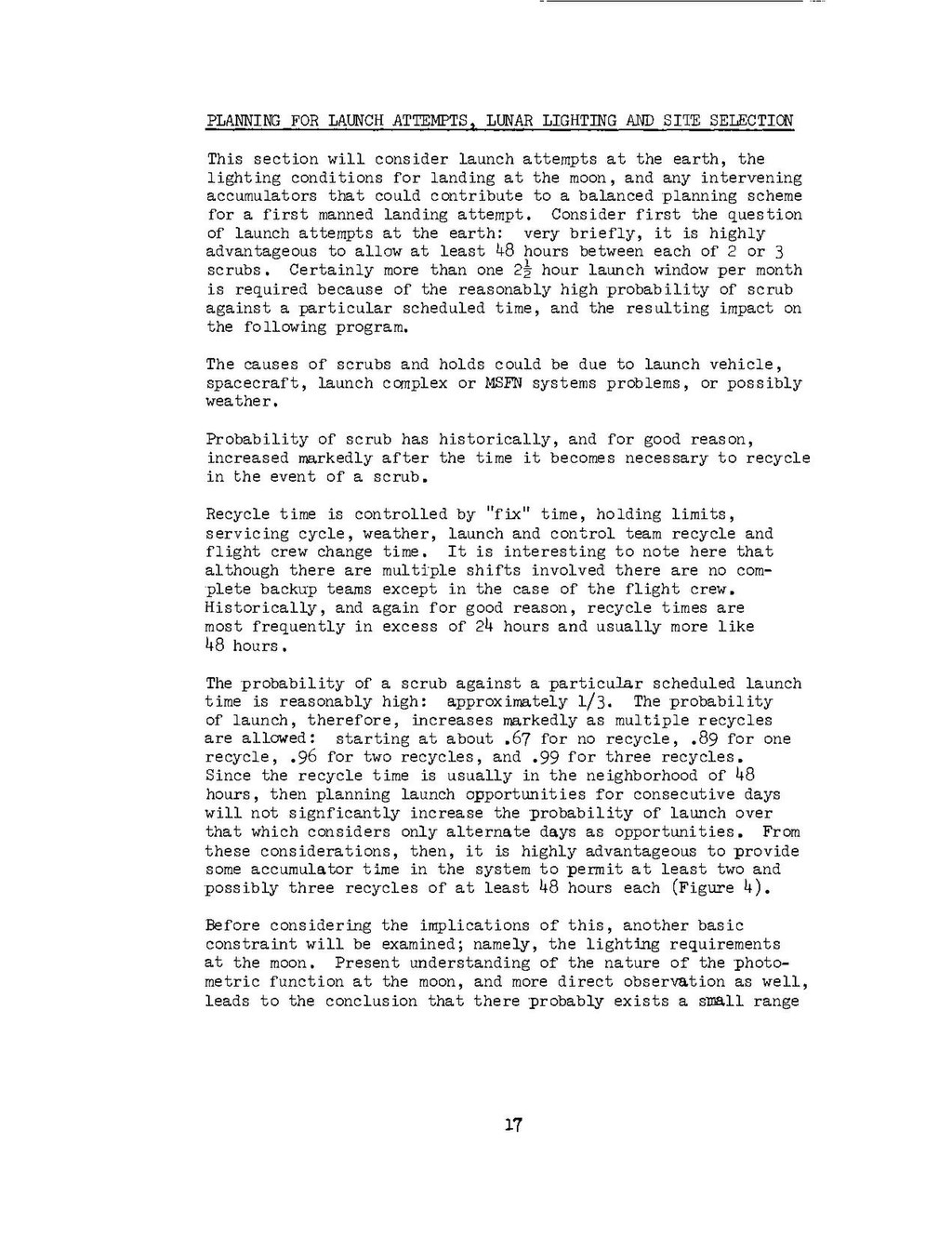PLANNING FOR LAUNCH ATTEMPTS, LUNAR LIGHTING AND SITE SELECTION
This section will consider launch attempts at the earth, the lighting conditions for landing at the moon, and any intervening accumulators that could contribute to a balanced planning scheme for a first manned landing attempt. Consider first the question of launch attempts at the earth: very briefly, it is highly advantageous to allow at least 48 hours between each of 2 or 3 scrubs . Certainly more than one 2½ hour launch window per month is required because of the reasonably high probability of scrub against a particular scheduled time, and the resulting impact on the following program.
The causes of scrubs and holds could be due to launch vehicle, spacecraft, launch complex or MSFN systems problems, or possibly weather.
Probability of scrub has historically, and for good reason, increased markedly after the time it becomes necessary to recycle in the event of a scrub.
Recycle time is controlled by "fix" time, holding limits, servicing cycle, weather, launch and control team recycle and flight crew change time. It is interesting to note here that although there are multiple shifts involved there are no complete backup teams except in the case of the flight crew. Historically, and again for good reason, recycle times are most frequently in excess of 24 hours and usually more like 48 hours.
The probability of a scrub against a particular scheduled launch time is reasonably high: approximately l/ 3. The probability of launch, therefore, increases markedly as multiple recycles are allowed: starting at about .67 for no recycle, .89 for one recycle, .96 for two recycles, and .99 for three recycles. Since the recycle time is usually in the neighborhood of 48 hours, then planning launch opportunities for consecutive days will not signficantly increase the probability of launch over that which considers only alternate days as opportunities. From these considerations, then, it is highly advantageous to provide some accumulator time in the system to permit at least two and possibly three recycles of at least 48 hours each (Figure 4).
Before considering the implications of this, another basic constraint will be examined; namely, the lighting requirements at the moon. Present understanding of the nature of the photo metric function at the moon, and more direct observation as well, leads to the conclusion that there probably exists a small range
17
